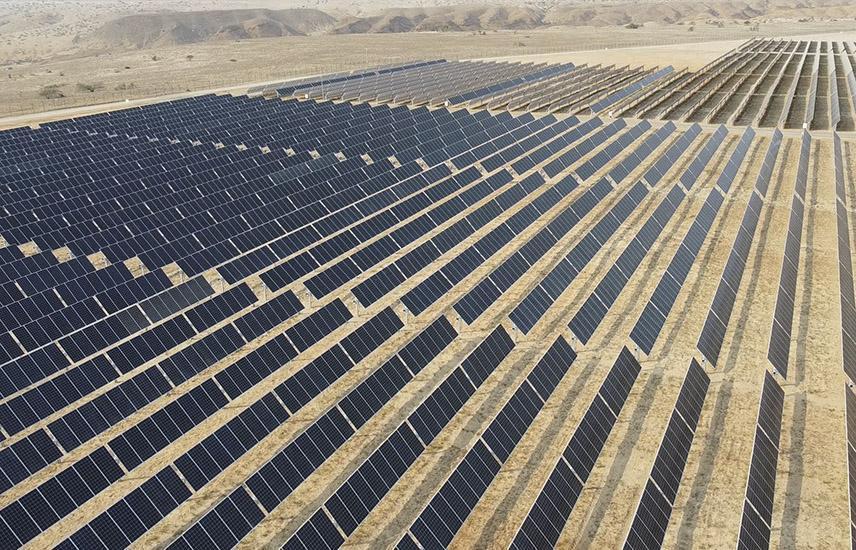Africa-Press – Angola. By 2027, Angola’s renewable energy generation capacity will reach 71 percent of the total to be produced in the country, said, this Monday, engineer João Fernandes, from the National Directorate of Energy and Rural Electrification, of the Ministry of Energy and Water.
In an interview the engineer explained that more than 62% of the country’s energy production comes from renewable sources, that is, water and photovoltaic (solar). These two combinations, according to the technician, now have a considerable weight in the capacity to produce clean energy.
Angola’s energy matrix comprises 59.79% hydro-electric energy, 35.74% thermal energy, 3.81% solar energy and 0.57% hybrid energy. In total, 63.6% of the energy produced nationally comes from clean sources.
To achieve the target of 71% clean energy, foreseen in the Electricity Sector Development Plan, the source said that they are counting on the Caculo Cabaça hydroelectric plant, which will generate 2,100 Megawatts (MW) and several solar energy projects.
As for the projects, these are the Biópio photovoltaic plant, the largest in Sub-Saharan Africa, with a production capacity of 188.8 MW, Baía Farta with 96.7MW, Catete and Laúca, which will introduce another 500 Megawatts.
In addition to these, there are also more than five photovoltaic plant projects, which will introduce around 70MW, the Quilengues plant, which will have a capacity of 80 MW and the Caraculo plant, projected for 50 MW, but already producing 25 MW. , since the inauguration of the first phase.
According to the interlocutor, at the moment, Angola has an estimated solar energy production capacity of 285.50 MW and the aim is to reach just over one gigawatts.
Hydro and solar energy sources, according to the engineer, are those that offer a large energy capacity for Angola.
“We have the largest water capacity in Africa and also the largest solar energy potential in the world. We have solar energy potential that varies annually from 1.3 to 2.3 kilowatts/hour per square meter. I think it is one of the best in the world,” the interlocutor believes.
The energy production capacity currently stands at 6.2 gigawatts and is expected to reach 8 gw in 2027. The electrification rate is at more than 42% and is expected to reach 50% in 2027, combining the various sources power.
Investments in renewable energy
Comparing benefits between fossil and renewable energy, João Fernando said that fossil fuel is regular, has very high greenhouse gas emissions, mainly carbon dioxide, and has a 24-hour operating cost and the burning of fuels makes it too expensive. the daily operating cost of a thermal power plant.
The hydroelectric plant (clean energy) has a cheaper operating cost, but the cost of the work is much more expensive, and is very dependent on the intermittency of the rivers, if they have a high flow, as the river flow has been low.
As for solar energy, it depends on the incidence of sunlight throughout the year. There are periods with less incidence and also with more. “The idea of investing in renewable energy is to find the best combination and overcome the weaknesses of one technology with the strengths of others. Hence the need to use different energy sources, diversifying”, he asserted.
He added that the objective is also, within capabilities and potential, to find a way to produce the cheapest energy, but with the best possible quality. Depending on what the intermittences or devalences of each energy source are.
Energy production trajectory
In 2015, Angola’s energy matrix was more than 50% thermal energy (generators), from the burning of diesel, less than 50% was hydro energy. These two combinations culminated in the production of around 2.3 gigawatts.
During this period (2015), the State was spending 1.3 billion liters of fuel per day for thermal power plants and, in 2022, this was reduced to 500 million kwanzas. A reduction of almost 900 million liters.
From 2015 to 2022, there was an increase of almost three times the amount of production, including a rise from less than 50% of hydropower to 58% and thermal energy to 36% and was introduced in the two hydropower plants and thermal, 5% of production capacity from solar sources.
These two combinations meant that hybrid and solar energy began to have a weight in production capacity above 62% and the capacity went from 2.3 gigawatts in 2015 to 6.2 in 2022. “It is a gain of more than double the capacity” , said engineer João.
On the other hand, he explained that the State spends, on average, investing in renewable energy, 1.5 million dollars for each megawatt. “These expenses have to do with transport factors, even the final execution of the project, in the final delivery and are not very different from the price charged around the world”, he clarified.
For More News And Analysis About Angola Follow Africa-Press






